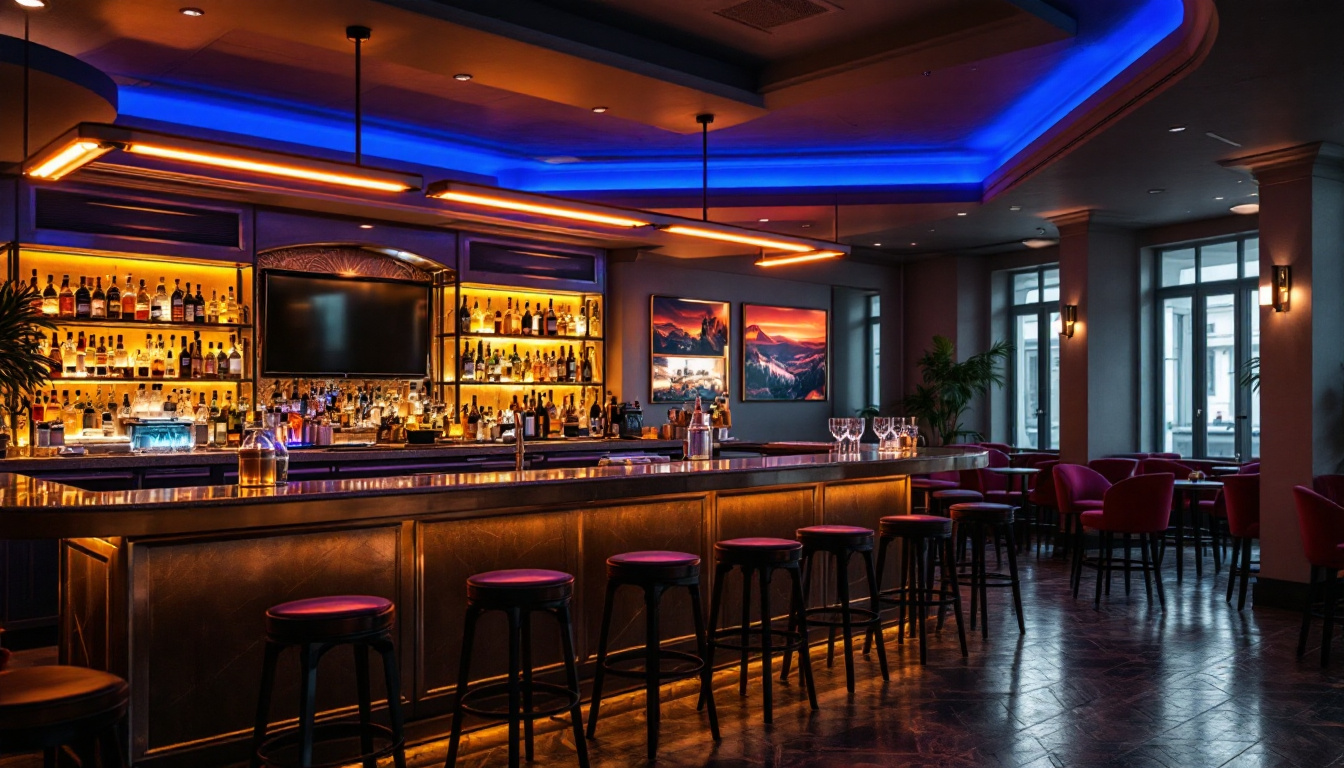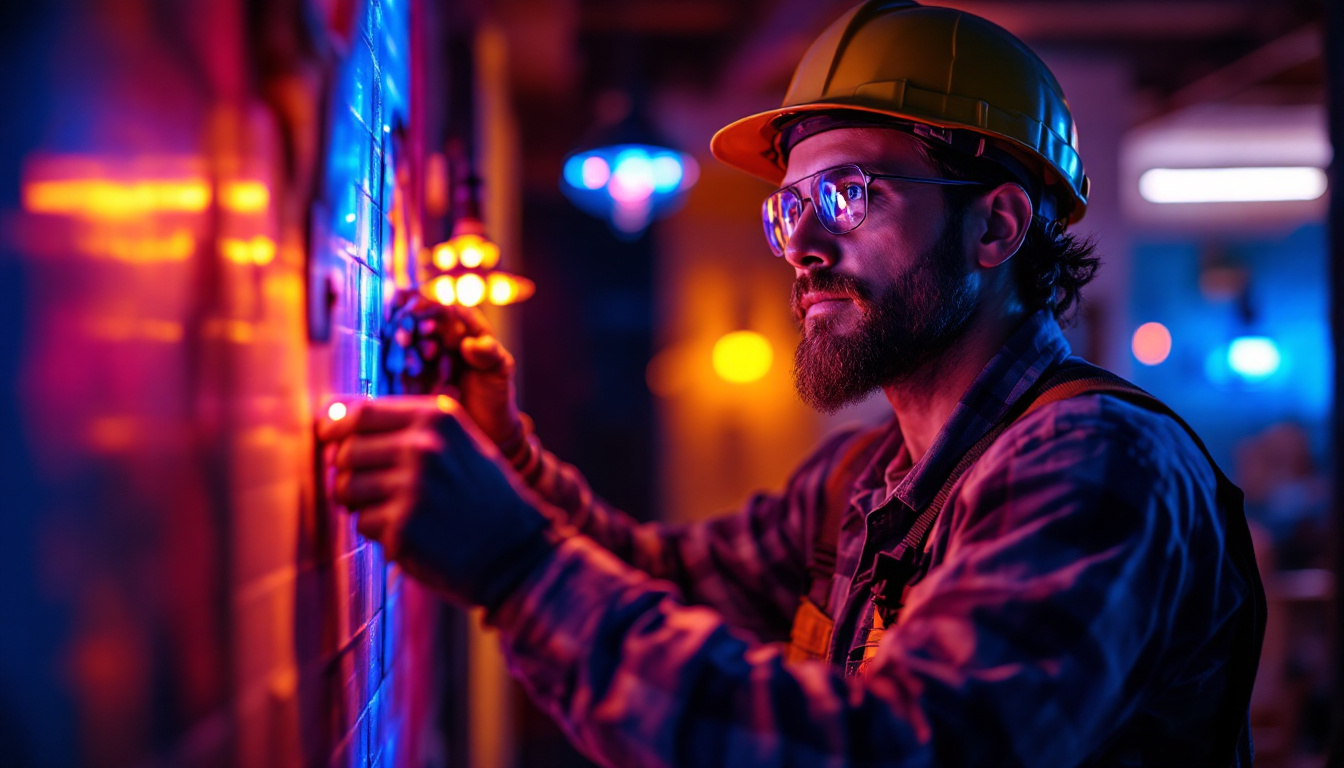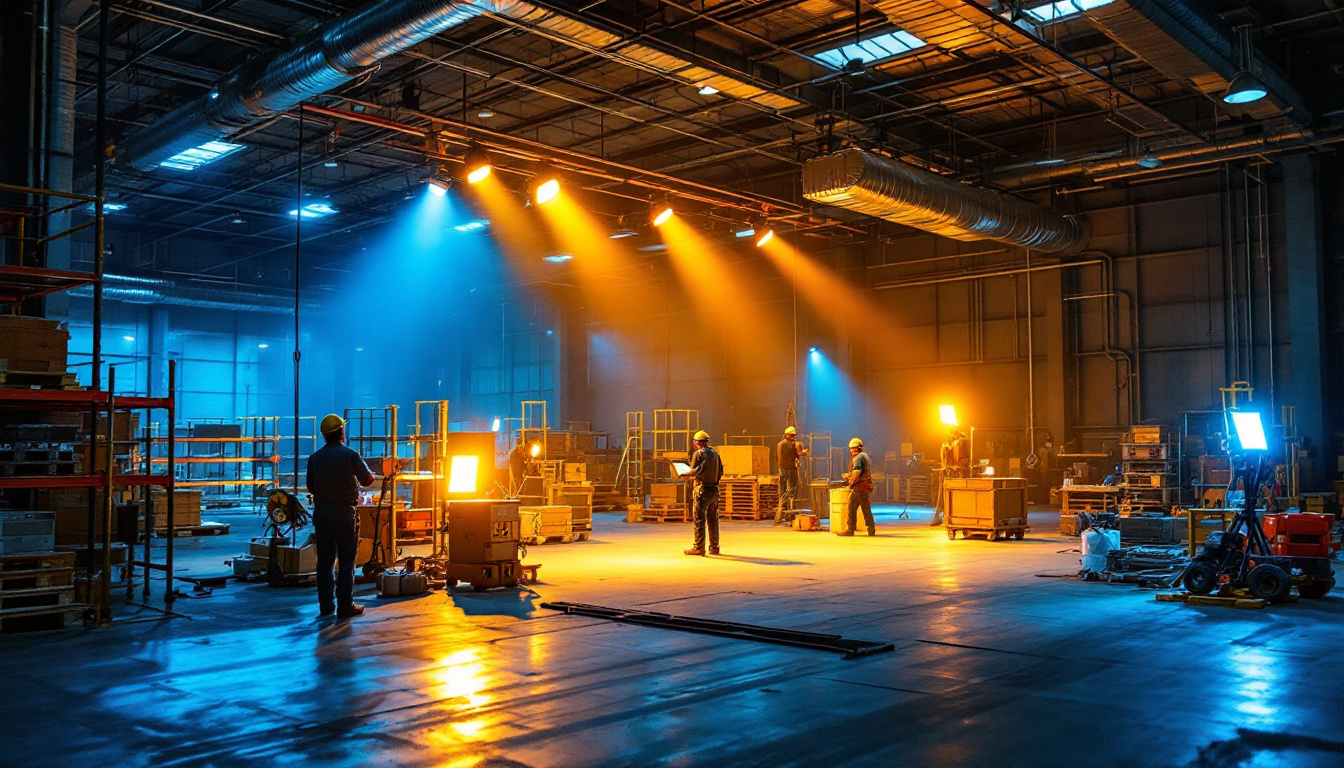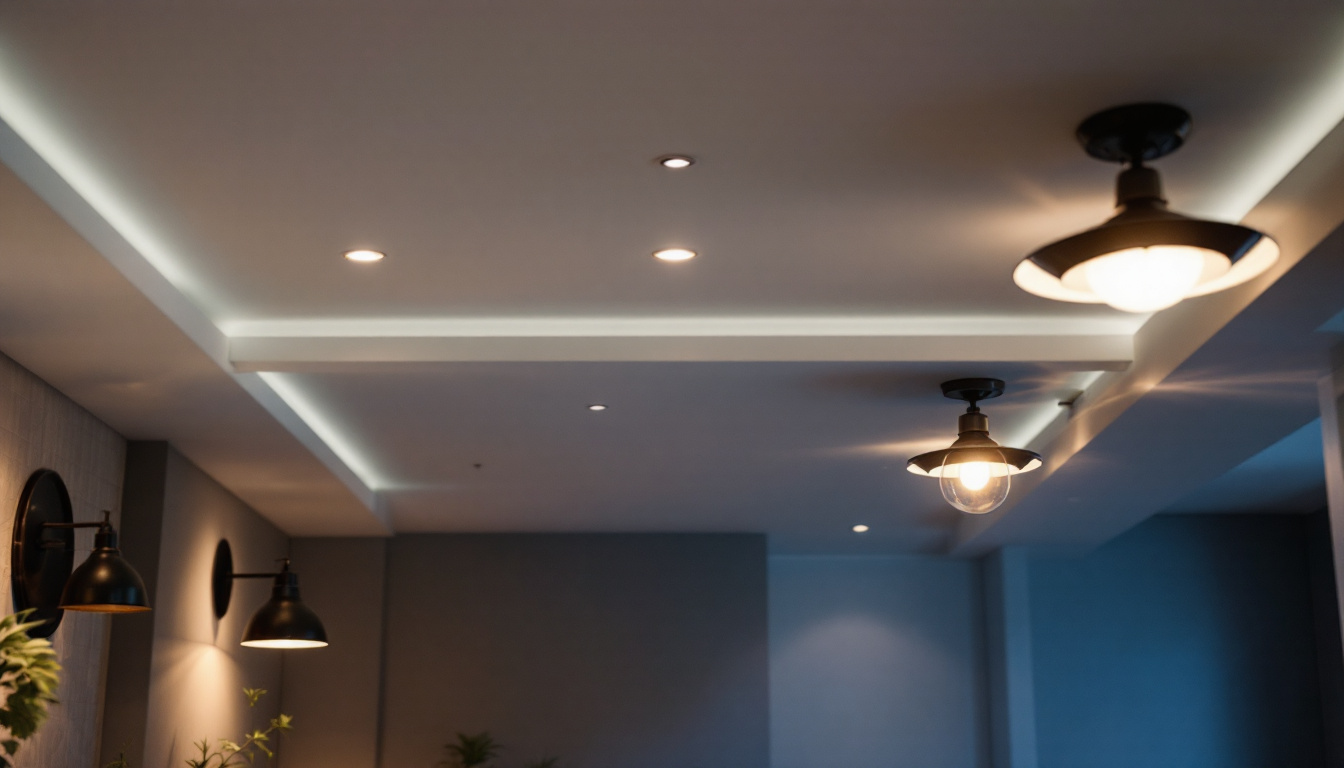
In the realm of modern lighting solutions, over bar lights have emerged as a significant player, particularly in commercial settings such as restaurants, bars, and cafes. These fixtures not only enhance the aesthetic appeal of a space but also contribute to energy efficiency, making them a preferred choice for lighting contractors and business owners alike. This article delves into the various aspects of over bar lights, highlighting their benefits, types, installation considerations, and maintenance practices.
energy-efficient lighting has become a crucial topic in recent years, driven by the need for sustainability and cost savings. As businesses strive to reduce their carbon footprint, the choice of lighting fixtures plays a pivotal role in achieving these goals. Over bar lights, with their unique design and functionality, offer an excellent solution for energy-conscious establishments.
By utilizing advanced technologies such as LED, over bar lights consume significantly less energy compared to traditional lighting options. This reduction in energy consumption not only lowers utility bills but also minimizes the environmental impact, aligning with the growing trend of eco-friendly practices in the hospitality industry. Furthermore, the aesthetic appeal of over bar lights can enhance the ambiance of a space, making it more inviting for customers and improving their overall experience.
Investing in energy-efficient lighting systems can lead to substantial cost savings over time. Over bar lights typically have a longer lifespan than conventional bulbs, which means fewer replacements and reduced maintenance costs. Additionally, the lower energy consumption translates into lower monthly electricity bills, allowing businesses to allocate resources to other critical areas. This can be particularly beneficial for establishments that operate long hours, where lighting costs can quickly add up.
For lighting contractors, presenting these financial benefits to clients can significantly enhance the appeal of over bar lights. By demonstrating the potential return on investment (ROI), contractors can help clients make informed decisions that align with their budgetary constraints and sustainability goals. Moreover, showcasing case studies or testimonials from other businesses that have successfully transitioned to energy-efficient lighting can further bolster the argument for making the switch, providing tangible evidence of the advantages that come with such an investment.
Many regions have implemented regulations and incentives to promote energy efficiency in commercial lighting. By opting for over bar lights, businesses can often qualify for rebates or tax credits, further enhancing the financial viability of such investments. Lighting contractors should stay informed about local regulations and available incentives to provide valuable guidance to their clients. This proactive approach not only aids businesses in navigating the complexities of compliance but also positions contractors as trusted advisors in the realm of energy efficiency.
Additionally, as governments worldwide continue to prioritize sustainability, the landscape of energy-efficient lighting is likely to evolve. New technologies and innovations are constantly emerging, making it essential for businesses to stay updated on the latest advancements. By embracing these changes, establishments can not only improve their lighting systems but also contribute to a larger movement towards a greener future, fostering a sense of corporate responsibility that resonates with environmentally conscious consumers.
Over bar lights come in various styles and configurations, each offering unique benefits and aesthetic qualities. Understanding the different types available can help lighting contractors recommend the most suitable options for their clients’ specific needs.
Pendant lights are a popular choice for over bar lighting due to their versatility and visual appeal. Hanging from the ceiling, they can be adjusted to different heights, allowing for customized lighting effects. Pendant lights come in various designs, from sleek and modern to vintage and rustic, enabling contractors to match the fixtures with the overall decor of the establishment.
Moreover, pendant lights can be equipped with energy-efficient bulbs, such as LEDs, ensuring that they not only look good but also perform well in terms of energy consumption. This combination of style and efficiency makes them a favored option in many bars and restaurants. Additionally, pendant lights can be clustered in groups to create a dramatic focal point above the bar, enhancing the overall atmosphere and drawing patrons’ attention to the drink selection. With options for colored glass or decorative shades, pendant lights can also contribute to branding efforts by reflecting the theme of the establishment.
Track lighting systems provide flexibility and adaptability, making them an excellent choice for over bar applications. These systems consist of a track mounted on the ceiling, with adjustable light fixtures that can be positioned to highlight specific areas. This feature is particularly beneficial in bars where the layout may change frequently or where different sections require varying levels of illumination.
Additionally, track lighting can accommodate energy-efficient bulbs, allowing for a cohesive approach to energy savings. Contractors can recommend track lighting as a solution that not only enhances the ambiance but also offers practical benefits in terms of energy efficiency. The ability to direct light where it’s needed most can help create a dynamic environment, allowing for different moods throughout the day or evening. For instance, brighter lighting can be used during happy hour to energize the space, while softer lighting can create a more intimate atmosphere later in the night.
Recessed lighting, also known as can lighting, is another popular option for over bar installations. These fixtures are installed into the ceiling, providing a clean and streamlined look. Recessed lights can be used to create a subtle glow or to provide focused illumination on the bar area, depending on the design and placement.
One of the key advantages of recessed lighting is its ability to blend seamlessly with the ceiling, making it an excellent choice for establishments with low ceilings or those aiming for a minimalist aesthetic. When paired with energy-efficient bulbs, recessed lighting can significantly contribute to the overall energy savings of a space. Furthermore, the use of dimmable recessed lights allows for greater control over the lighting environment, enabling staff to adjust the brightness according to the time of day or specific events, such as live music or themed nights. This adaptability not only enhances the customer experience but also helps in managing energy consumption effectively, making it a smart choice for modern bar designs.
Proper installation of over bar lights is crucial to ensure optimal performance and safety. Lighting contractors must consider various factors during the installation process to achieve the best results.
Before installation, it is essential to assess the electrical requirements of the chosen lighting fixtures. Over bar lights may require specific voltage levels or wiring configurations, and ensuring compliance with local electrical codes is paramount. Contractors should work closely with electricians to ensure that the installation meets all safety standards and regulations.
Additionally, understanding the power load and capacity of the existing electrical system is vital. This knowledge will help determine whether upgrades or modifications are necessary to support the new lighting fixtures.
The placement and spacing of over bar lights can significantly impact the overall lighting effect and functionality. Contractors should consider factors such as the height of the bar, the layout of the space, and the desired ambiance when determining the optimal positioning of the fixtures.
For pendant lights, a common guideline is to hang them 28 to 34 inches above the bar surface. This height allows for adequate illumination while maintaining an inviting atmosphere. For track and recessed lighting, careful planning of the spacing between fixtures will ensure even distribution of light, minimizing shadows and dark spots.
Regular maintenance of over bar lights is essential to ensure their longevity and efficiency. Lighting contractors can play a vital role in educating clients about proper maintenance practices to maximize the lifespan of their fixtures.
Over time, dust and grime can accumulate on light fixtures, diminishing their brightness and overall effectiveness. Regular cleaning is necessary to maintain optimal performance. For pendant and track lights, a simple dusting with a soft cloth can suffice, while recessed lights may require occasional cleaning of the trim and lens to ensure maximum light output.
Contractors should advise clients on the best cleaning products and techniques to avoid damaging the fixtures. Using non-abrasive cleaners and soft materials will help preserve the finish and integrity of the lighting fixtures.
As with any lighting system, bulb replacement is a routine maintenance task that should not be overlooked. Over bar lights equipped with energy-efficient bulbs, such as LEDs, will have longer lifespans, but periodic checks are still necessary to ensure all fixtures are functioning correctly.
Contractors can provide clients with a maintenance schedule that includes regular inspections of the lighting system. This proactive approach will help identify any issues early on, preventing potential disruptions in service and ensuring a consistently well-lit environment.
Over bar lights represent a significant advancement in energy-efficient lighting solutions for commercial establishments. Their ability to combine aesthetic appeal with functionality makes them an essential consideration for lighting contractors working in the hospitality industry. By understanding the various types of over bar lights, installation considerations, and maintenance practices, contractors can provide valuable insights to their clients, helping them make informed decisions that align with their energy efficiency goals.
As the demand for sustainable practices continues to grow, the importance of energy-efficient lighting will only increase. Over bar lights, with their versatility and efficiency, will undoubtedly remain a staple in the lighting landscape, offering businesses the opportunity to enhance their environments while reducing their environmental impact.
Ready to elevate your lighting projects with the perfect blend of style, efficiency, and value? Look no further than LumenWholesale for a vast selection of spec-grade over bar lights that promise to transform any commercial space. Our commitment to quality and affordability ensures that you can access premium lighting solutions without the premium price tag. Say goodbye to inflated markups and hello to hassle-free bulk buying with free shipping. Don’t compromise on quality or cost—choose LumenWholesale for your next project and experience the ultimate in lighting excellence. Wholesale Lighting at the Best Value is just a click away.

Discover how LED dinner events are revolutionizing the lighting industry by boosting contractors’ profits and enhancing client relationships.

Discover the top LED lights revolutionizing warehouse illumination and enhancing efficiency for lighting contractors.

Discover how choosing the right lights for basement ceilings can elevate your lighting projects and help you secure more contracts.

Discover the essential facts about solar pathway lights outdoor that every lighting contractor should know.